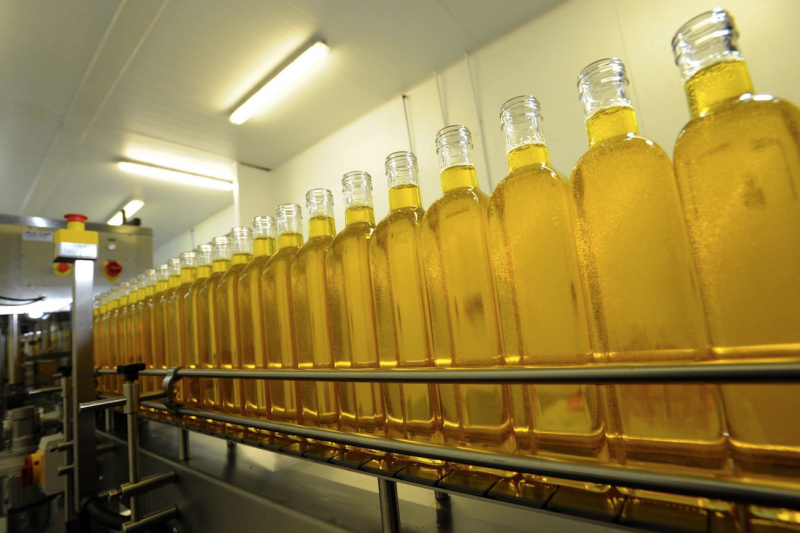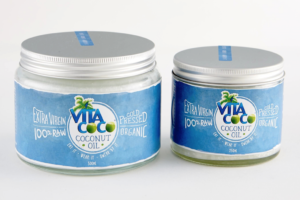Health slick

Emma Woods discusses the rise and demand of ‘healthier’ cooking oils and the challenges that manufacturers could face if the trend continues
Rewind back to the 1970s and 1980s, a time when people were told to limit their fat consumption in order to cut the risk of heart disease and death. National dietary guidelines were released that recommended reducing dietary fat consumption to 30 per cent of total energy intake and saturated fat to 10 per cent of total energy intake; but in 2015 that advice was thrown out, with researchers saying that it lacked any solid trial evidence to back it up and that it ‘should not have been introduced’. One expert even warned that ‘an overreliance in public health on saturated fat as the main dietary villain for cardiovascular disease has distracted from the risks posed by other nutrients, such as carbohydrates’.
Today, nutritionists are much more in favour of the balanced diet approach, and people are becoming ever more conscious about the things they consume. The fact that consumers are always on the lookout for the next best thing gives food manufacturers a lot of scope to develop new, innovative products which are nutritious yet tasty at the same time.
A new generation of cooking oils
Particular attention has been paid to ‘healthier’ oils, which can offer a lower saturated fat content, or ‘healthier’ fat content, over more traditional cooking oils. The rapeseed variety, for example, is considered healthier because it contains the lowest saturated fat content of any oil and 50 per cent less than olive oil. The cold pressed rapeseed market is now worth £9.6 million – up 47.3 per cent year on year. And it’s only going to continue to grow; perhaps by as much as 10 times its current size over the next five years. If that comes to pass then it could account for almost 10 per cent of the UK’s rapeseed harvest by 2020.
But one oil has been garnering more attention than the rest recently, and that’s coconut oil; a product which is often talked about as the new superfood. The oil was once demonised for its high saturated fat content, but here’s where it gets tricky: there are different types of saturated fats, and some are worse than others. Coconut oil is made up of a blend of medium chain saturated fatty acids, which are believed to offer certain health benefits. According to Kantar Worldpanel data from September 2015, sales of coconut oil more than tripled last year, so it’s well and truly flying off the shelves.
Celebrities are no doubt playing a part in its rising demand – not only are they using it to cook with, but they’re also shouting about the beauty benefits it can offer too. Want to deep condition your hair and add more shine? Coconut oil can do that. It’s also said to strengthen your nails, whiten your teeth and ward off tooth decay. Vita Coco, which we pack cold pressed coconut oil for, even shares ways for people to make a body cream, hair mask and make up remover using coconut oil on its website.
Manufacturing challenges
With the largest cold pressing facility in the UK, we’ve seen first hand how the market for healthier oils has grown over the last few years and we think that trend is only going to continue: the speciality oil sector is now worth £41 million, up 55.4 per cent on last year. Last year we invested in a new bottling line at our factory to cope with increased demand, and future planned investments include upgrading our filtration systems to allow up to six million litres of oil per year to be processed by the end of 2016.
Coconut oil does present its own problems though; getting it to the point where it’s ready to be dispatched to the supermarket and put on the shelves is challenging. The oil melts at 24°C, which means Vita Coco’s product, for example, leaves the Philippines as a liquid but arrives in the UK as a solid. To preserve the product’s integrity, we gently heat the oil for between 12 and 36 hours up to 30°C in order to melt the oil for filling without causing damage or risking its cold pressed status. It is then bottled as a liquid into jars, labelled and packed for dispatch.
It joins other coconut products on the supermarket shelves – with coconut water and sugar also currently ‘on trend’. A recent article by the Wall Street Journal found that the appetite for these products is actually pushing the price of coconut oil up. The biggest challenge now is ensuring growers can supply enough to keep up with consumer demand.
Author
Emma Woods is technical manager at Phoenix Group, one of the UK’s leading suppliers of contract packing and speciality enhanced care manufacturing to the food industry.
CASE STUDY
Company: Vita Coco
Product: Vita Coco Organic Coconut Oil
Processes: Delicate heating, hot filling, packing, despatch
Volume: Almost one million units of coconut oil in 2015, packaged into volumes of 250ml, 500ml and 750ml jars.

The idea behind Vita Coco was born during a casual outing to a Manhattan bar, where childhood friends Mike Kirban and Ira Liran met two young women from Brazil. They asked the women what they missed the most about Brazil, to which they answered ‘agua de coco’ (coconut water).
Two months later, Liran travelled to Brazil and started researching the prospect of branding coconut water for the American market. Soon after, Vita Coco was born.
The company is now the market leader for coconut water, sold in over 30 countries including the US, Canada, most of Europe, Japan, China and New Zealand.
As the coconut craze continued, its founder realised that the company could capitalise on consumers’ growing appreciation for the wellness properties of the fruit, and so it developed an organic coconut oil range.
Phoenix Group has been working with the global brand since 2014, producing almost one million units of coconut oil for Vita Coco in 2015. The company is on track to hit five million units a year by 2017. While Phoenix is the contract filler for the oil, labelling is designed by the brand in association with New York creative agency Madwell.
Its organic coconut range includes three sizes. Made using cold pressed coconut oil from the Philippines, the 250ml and 500ml sizes are available in a glass jar and the 750ml size is available in a plastic jar.



